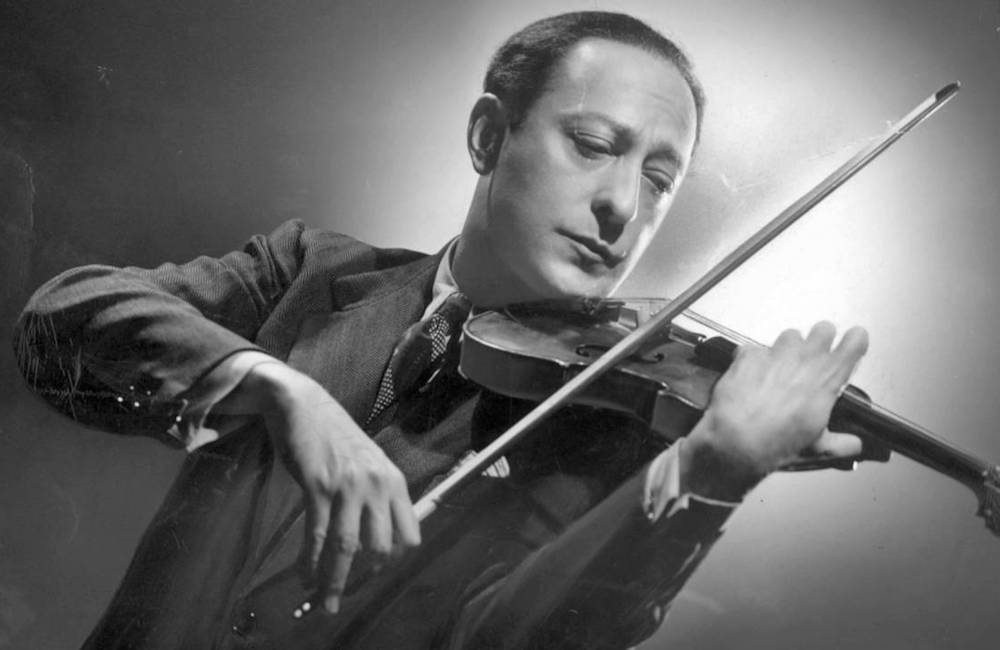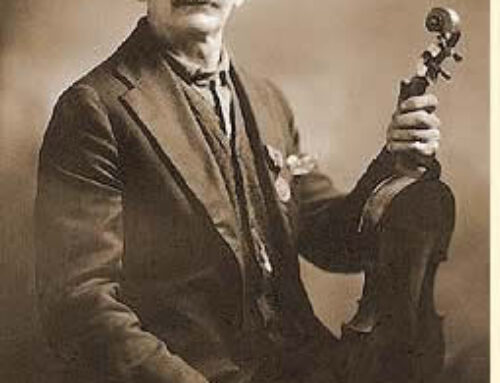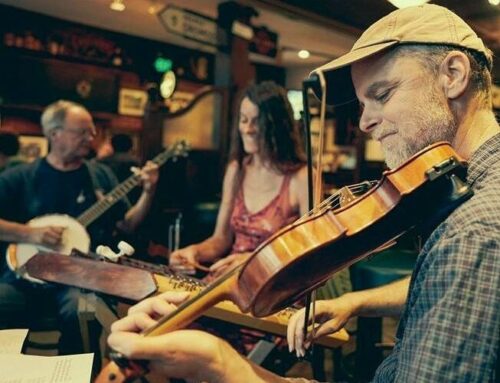
From the Desk of Steve
One of the first things people ask me when they find out I play the violin is ‘can you play ‘The Devil Went Down to Georgia?’ (I can) and in second place is usually ‘Have you seen ‘The Red Violin?’ (I have.)
Sometimes people over a certain age bring up either ‘Music of the Heart’ (Not to be confused with ‘Whisper of the Heart’ which also has violins in it) or ‘Mr. Holland’s Opus.’
But my favorite movie about music schools, music teaching, or the violin is a much-too-obscure cinematic masterpiece from 1939 called ‘They Shall Have Music.’
‘They Shall Have Music’ is one of my favorite movies, and I recommend it often. I confess to taping it on a VHS cassette (a black rectangle with a tape reel inside that inserted into a box-shaped player, for the younger readers. Blank VHS tapes were available in all big box stores and could hold six hours of tv) on the classic movie channel while I was in high school.
‘They Shall Have Music’ is part feel-good movie, part coming-of-age story, part socio-economic drama, and part statement movie. The movie stars Walter Brennan as an aging music teacher running a music school for financially disadvantaged inner city youths with his adult daughter. Unknown to the good professor, his music school is in dire straits, their sponsor has joined the choir invisible, and the man from whom he rents his instruments is close to sending the repo men to take them back from the students. The owner’s son, however, is dating the professor’s daughter and together they keep both of their fathers in the dark, stalling for time as long as they can.
The movie’s central protagonist is an urban ragamuffin (a poorly dressed, dirty child, NOT a designer cat breed) named Frankie, who pals around with his little friends committing usually harmless petty crimes. Frankie’s late father was a music lover, and Frankie has perfect pitch.
While dodging a street cop, Frankie and a friend duck into a concert hall where Jascha Heifetz is performing. The role of Jascha Heifetz was awarded, in this film, to Jascha Heifetz, who in preparation for the role had studied violin at Vilna and later at the St. Petersburg Conservatory. (at age 18, (the year 1919) Heifetz was the highest paid violinist in the world.)
Though Heifetz’ performance was wasted on his friends, Frankie was enthralled by the music. Later, after running away from his step-father, Frankie finds himself hiding out in Walter Brennan’s professor’s music school. The professor, finding out Frankie has perfect pitch, takes him on as a student.
Eventually, the two lovebirds are unable to delay their fathers’ collision course any longer, and the repo men are on their way. (the scene in which the professor’s daughter pleads with two suited thugs not to seize a child’s cello during her recital may be too intense for younger viewers) and Frankie and his ragtag band of latchkey kids devise the only plan to save their little music school: steal Jascha Heifetz’ violin in order to leverage Heifetz to intervene and save the school.
I encourage anyone with a love of movies OR music to watch this film. Partly because it’s a truly riveting story with drama, comedy, and every emotion you can feel all presented in grainy black and white, made in an era when movie-making was an entirely different form of art, and partly because it represents something I think all people want to believe in: the uniting power of sharing music, the importance of music education, and the power of the arts to reach people from all backgrounds.
Thankfully, thanks to technology, you don’t have to find a VCR at a yard sale and wait for this movie to air on TV to own a copy. So fire up the tv, make some tea (I recommend a Rooibos tea accompanied by macaroons OR a peach tea accompanied by macarons (yes, there is a difference.)
Serious violin enthusiasts will no doubt appreciate this movie’s footage of Heifetz. in the 30s, Heifetz was at his prime, a far cry from the older, stiffer violinist audiences might recall seeing on tv in the 70s, his face all contorted and strained with concentration as he plays Debussy’s ‘The Girl With The Flaxen Hair.’ There’s simply a shortage, due to the technological limitations of the 30s, of quality Heifetz footage during his best years, when he was playing Tchaikovsky’s 1st as effortlessly as most people breathe.
(footage below)
https://www.youtube.com/watch?v=kFaq9kTlcaY
Fun fact: When Peter Tchaikoksvy composed his violin concerto in D, he dedicated it to one of the most esteemed violinists of the era, Leopold Auer, of whose playing Tchaikovksy was especially fond. When Auer beheld the piece, he rejected it, calling it ‘unplayable’ and ‘ill suited for the violin’s tone.’ (Auer’s playing (below) was rather refined and conservative)
https://www.youtube.com/watch?v=QygG9ZFnmfk&list=RDEMPpsOyUdeb7IwMS21yaNMTA&start_radio=1
When I watch video of Heifetz, especially videos from his best years, I am most aware of his right hand. Heifetz uses the Russian bow grip, which I have found most of my students prefer to the more common (In the U.S.) Franco-Belgian bow grip. It is my belief that the Russian grip reduces tension on the back of the hand, by extension allowing greater control of the bow with less muscle and less strain on the elbow and shoulder, while also allowing the bow to move with gravity and the weight of the arm, instead of expending energy maintaining the bow’s position using your arm as a counterweight.
Whichever bow hold you prefer, and however you feel about the compositions of Peter Tchaivovsky, ‘They Shall Have Music’ is a must see for families with music students, especially families with music students struggling to love practicing.



